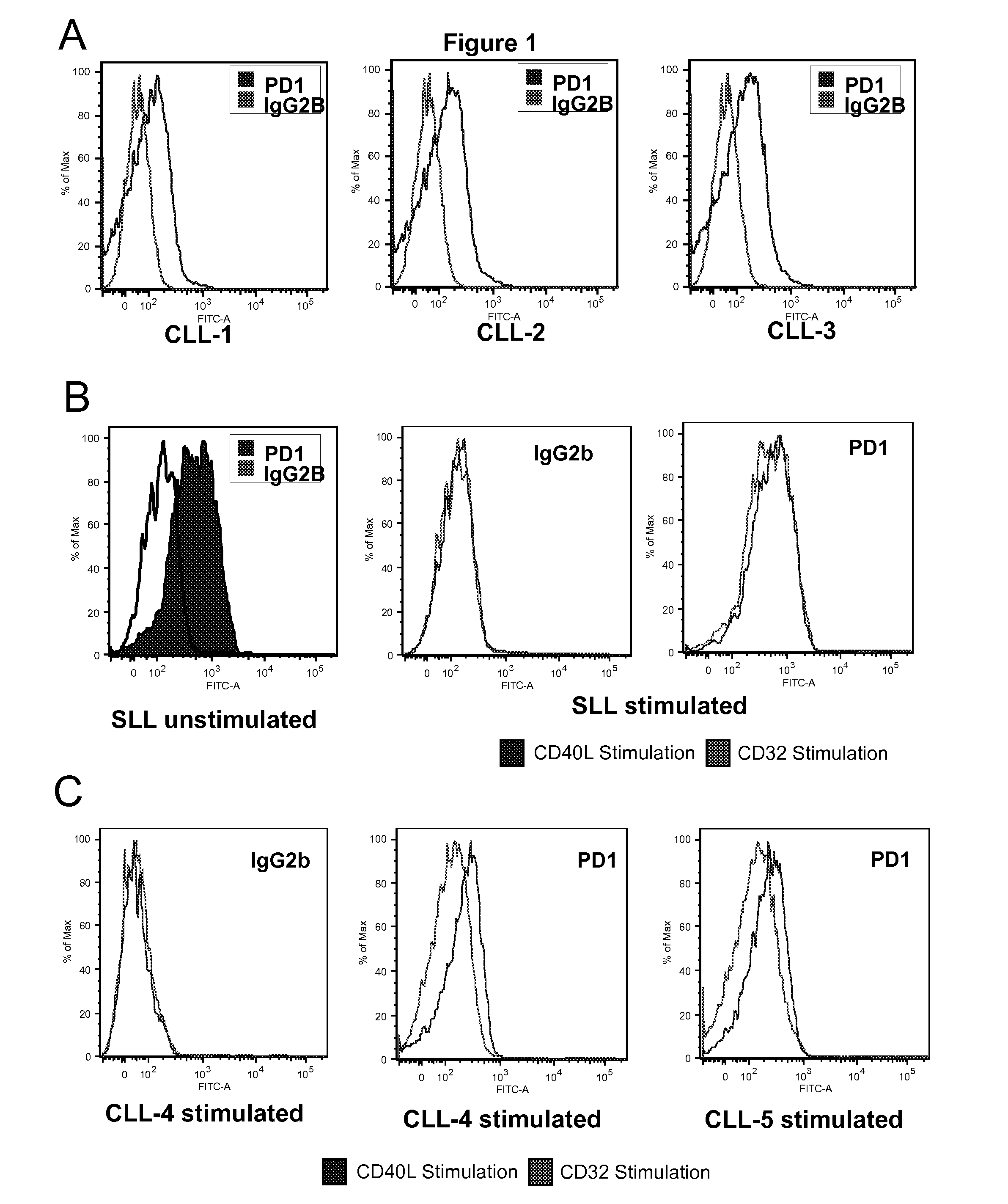Method for Treating and Diagnosing Hematologic Malignancies
a hematologic malignancy and hematologic technology, applied in the field of hematologic malignancies treatment and diagnosis, can solve the problems of increasing morbidity and mortality, side effects and complications, and not being able to respond to many patients, and achieve the effect of preventing excessive activation of the immune system
- Summary
- Abstract
- Description
- Claims
- Application Information
AI Technical Summary
Benefits of technology
Problems solved by technology
Method used
Image
Examples
example 1
Materials and Methods:
Generation of Anti-PD1, -PD-L1 and -PD-L2 MAbs
[0112]MAbs recognizing PD1 (clones PD1-6-4, obtainable from hybridoma CNCM I-3745, and PD1-3-1), PD-L1 (clone PD-L1-3) and PD-L2 (clone PD-L2-1) were generated by immunization of balb-c mice with the respective recombinant human Fc-IgG1 fusion proteins. Spleen cells were fused with X-63 myeloma cells and cloned according to already described procedures [Olive et al. 1986]. Hybridoma supernatants were screened by staining of transfected cells and for lack of reactivity with untransfected cells. The PD1-6-4 clone (mouse IgG1) was chosen for further IHC analysis based on its capacity to stain paraffin embedded tissues, whereas the PD1-3-1 clone was used for FC analysis due to a better sensitivity. PD-L1-3 and PD-L2-1 MAbs could be used only on frozen sections.
[0113]A total of 136 lymphoma biopsy samples from patients with informed consent was analyzed, including 35 cases of HL and 101 specimens of NHLs. ...
PUM
| Property | Measurement | Unit |
|---|---|---|
| heterogeneous | aaaaa | aaaaa |
| soluble | aaaaa | aaaaa |
| domain structure | aaaaa | aaaaa |
Abstract
Description
Claims
Application Information
 Login to View More
Login to View More - R&D
- Intellectual Property
- Life Sciences
- Materials
- Tech Scout
- Unparalleled Data Quality
- Higher Quality Content
- 60% Fewer Hallucinations
Browse by: Latest US Patents, China's latest patents, Technical Efficacy Thesaurus, Application Domain, Technology Topic, Popular Technical Reports.
© 2025 PatSnap. All rights reserved.Legal|Privacy policy|Modern Slavery Act Transparency Statement|Sitemap|About US| Contact US: help@patsnap.com

